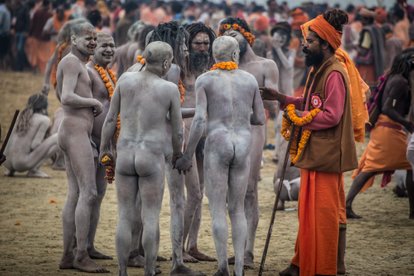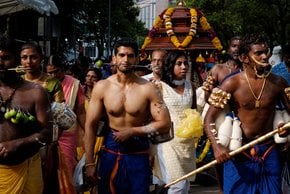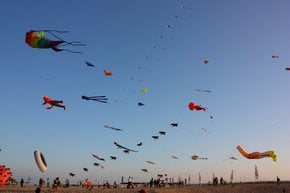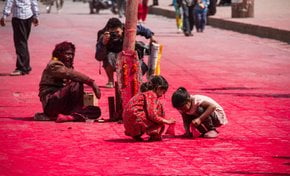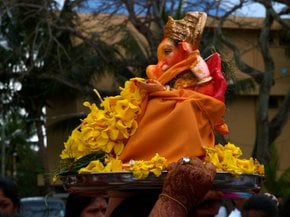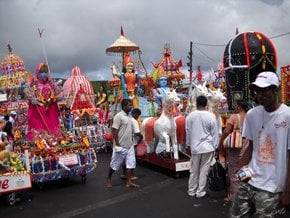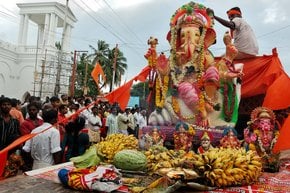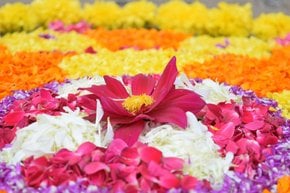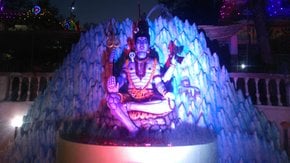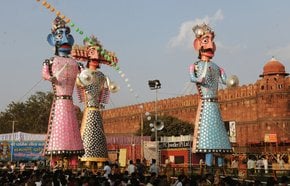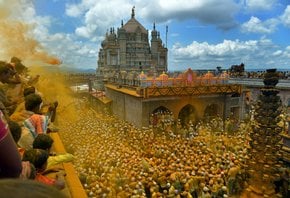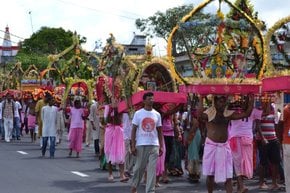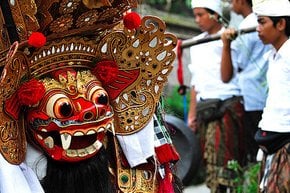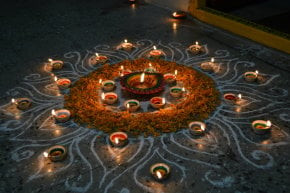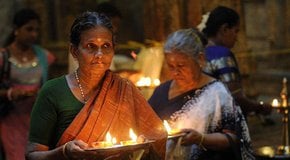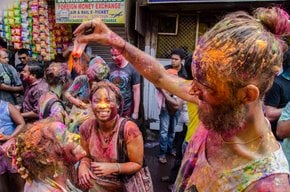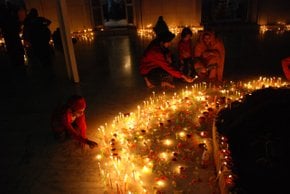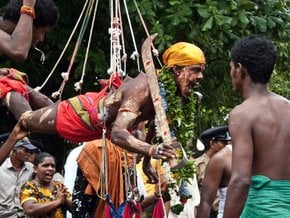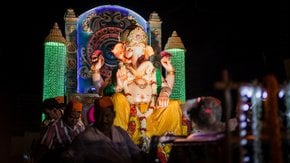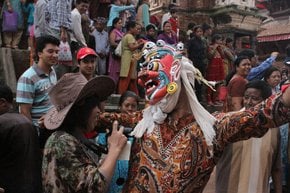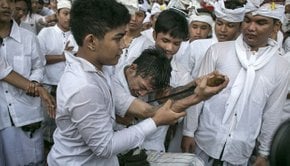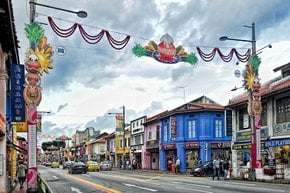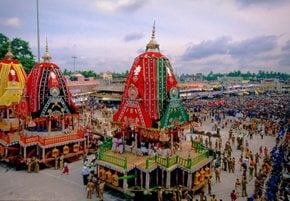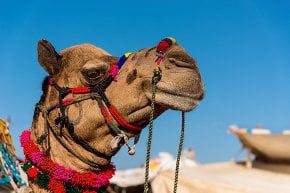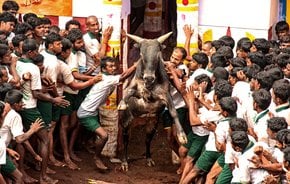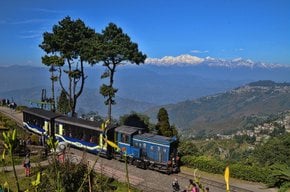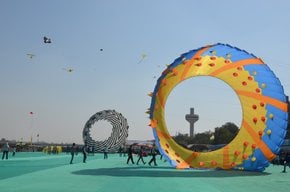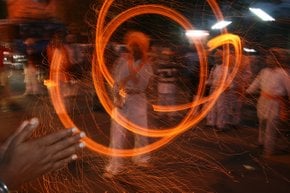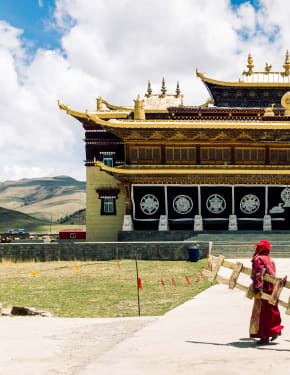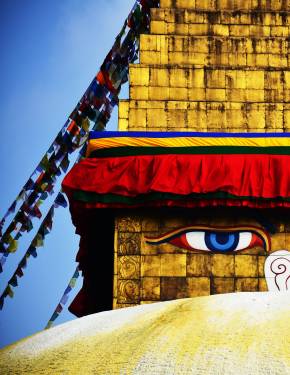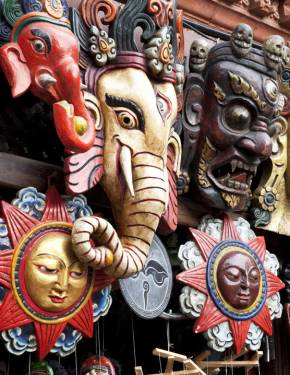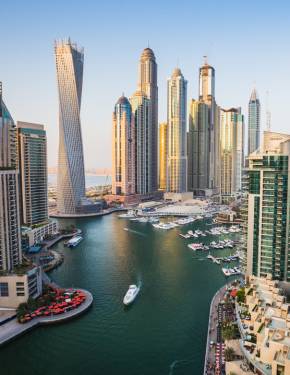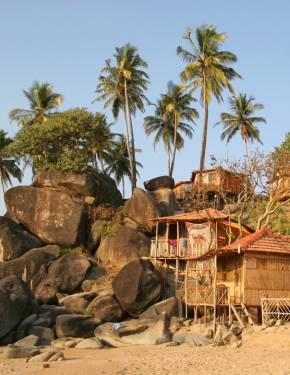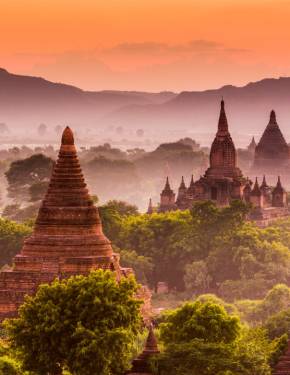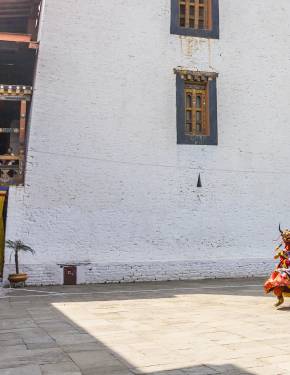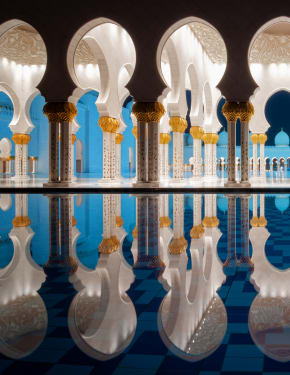Kumbh Mela 2025 in India
Immerse yourself in one of the biggest religious gatherings ever
Dates: January 13–February 26, 2025
The Kumbh Mela, or Festival of the Sacred Pitcher, is a profound Hindu pilgrimage and the world’s largest peaceful gathering. Rotating among four sacred sites—Prayagraj, Haridwar, Ujjain, and Nashik—the Kumbh Mela invites millions of devotees to bathe in holy rivers, seeking spiritual purification. This pilgrimage, rooted in Hindu mythology and guided by specific astrological alignments, attracts a diverse congregation, including ascetics, saints, sadhus, and everyday practitioners of Hinduism.
Time of the Celebration
The Kumbh Mela follows a unique rotation system across four sacred river sites in India—Prayagraj, Haridwar, Ujjain, and Nashik—each hosting the festival once every 12 years. This rotation means that each location hosts the event in turn. The timing of the Mela is based on specific astrological alignments of the Sun, Moon, and Jupiter, which are believed to make the ritual bathing at these sites most spiritually powerful. Kumbh Mela includes special events such as Ardh Kumbh (half Kumbh) due to specific auspicious dates, and Simhastha Kumbh (unique to Ujjain), adding to the spiritual significance and cultural richness of these gatherings.
Key Rituals and Activities
The Kumbh Mela offers various rituals, with sacred bathing being the main attraction. Millions of pilgrims gather at the Triveni Sangam, where they immerse themselves in the river waters, which are believed to possess divine properties. This act, as devotees believe, offers spiritual liberation and brings them closer to Moksha, or release from the cycle of rebirth. Certain days, beginning with Paush Purnima, are considered especially auspicious for these bathings, often accompanied by a grand procession known as the Shahi Snan. During this event, revered sadhus and saints from various Hindu sects, or Akharas, lead the way, lending additional blessings to the faithful through their accumulated spiritual power.
In addition to the bathing rituals, attendees can witness processions known as ‘Peshwai,’ where saints ride on elephants, horses, and chariots, creating a vibrant spectacle. Many pilgrims also attend spiritual discourses, led by religious leaders and participate in cultural activities, from music and dance to traditional arts, which showcase India’s diverse heritage.
Schedule and Program Details
The 2025 Maha Kumbh Mela in Prayagraj will follow a structured schedule with key bathing dates, beginning with Paush Purnima on January 13, which signals the start of Kalpvasa, a period of spiritual discipline and devotion for pilgrims. The next significant day is Makar Sankranti on January 14, when thousands gather for ritual bathing at the holy Triveni Sangam. Another major date, Mauni Amavasya, on January 29, is expected to draw the largest crowds for the Shahi Snan, or “Royal Bath,” which is the spiritual high point of the Kumbh Mela.
Additional notable days include Basant Panchami on February 3 and Maghi Purnima on February 12, where devotees continue to perform ritual immersions. The festival concludes with Maha Shivaratri on February 26, when pilgrims make their final dip in the sacred waters.
Mythological Significance
The roots of the Kumbh Mela lie deep within Hindu mythology. The legend of the festival dates back to the churning of the cosmic ocean by the gods and demons to obtain Amrita, the nectar of immortality. According to the tale, a fierce battle for the nectar ensued, during which a few drops spilled at four locations in India, namely Prayagraj, Haridwar, Ujjain, and Nashik. These sites became sacred, and every 12 years, the Kumbh Mela is held at each, rotating between these cities.
History
Historically, records of the Kumbh Mela date back to the Maurya and Gupta periods, with emperors like Akbar showing reverence for the gathering. During the British colonial era, the festival attracted attention for its vast scale and religious significance. Today, the Kumbh Mela, recognized by UNESCO as an intangible cultural heritage of humanity, symbolizes a blend of religious devotion, cultural unity, and historical resilience.
Location and Infrastructure
Prayagraj, the city hosting the 2025 Kumbh Mela, is situated in northern India at the meeting point of the Ganges, Yamuna, and the mythical Sarasvati rivers. This historic city in Uttar Pradesh is a treasure trove for Hindu pilgrims and history enthusiasts alike, offering a rich tapestry of ancient temples, monuments, and various tourist attractions. At the heart of Prayagraj lies the revered Triveni Sangam, a must-visit for anyone attending the Maha Kumbh Mela. Additionally, visitors can explore the spiritual heritage at temples like Hanuman Mandir, Alopi Devi Mandir, and Mankameshwar Temple. The Ashoka Pillar and colonial-era buildings, such as the University of Allahabad Building and Swaraj Bhawan, highlight the city's historical and architectural grandeur.
The city has seen significant infrastructural improvements over the years to manage the influx of millions of pilgrims. Temporary bridges, camps, sanitation facilities, medical stations, and information centers will be set up throughout the Mela grounds. Additionally, authorities implement strict crowd management and safety protocols to ensure a smooth experience for attendees.

